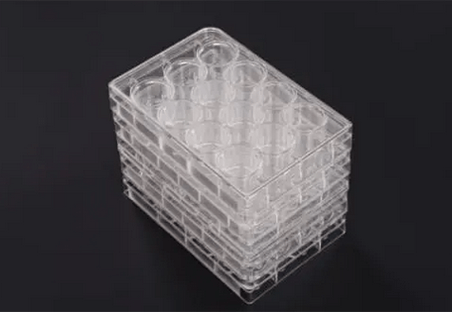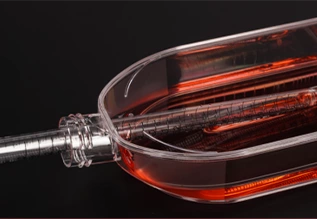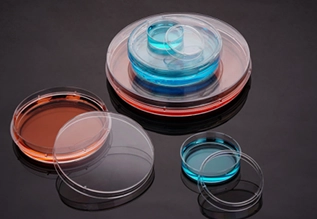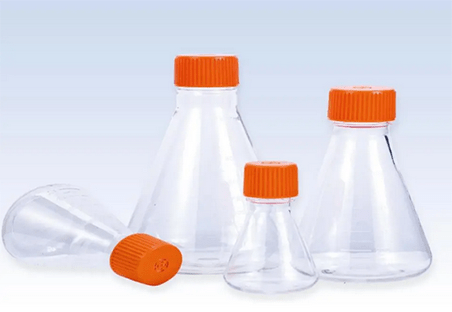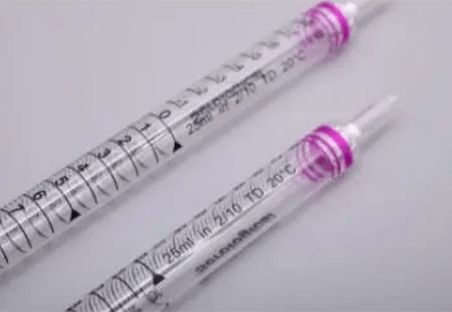In the world of cell culture, selecting the appropriate flask type is crucial for the success of experiments and the growth of cell cultures. The choice of flask can significantly impact cell growth, proliferation, and experimental outcomes. With various options available, researchers must understand the different types of tissue culture flasks and consider several factors before making a selection. This guide delves into the different types of tissue culture flasks, their advantages and limitations, and key factors to consider when selecting the perfect flask for your specific needs.
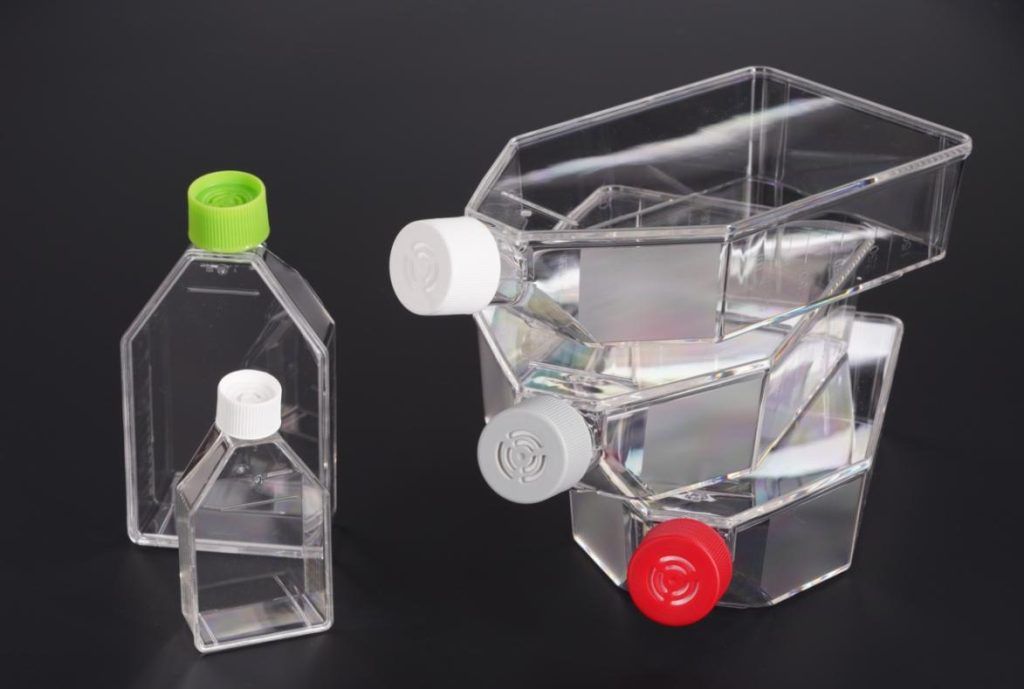
What are the Tissue Culture Flasks?
Tissue culture refers to the growth and maintenance of cells, tissues, or organs outside their natural environment, typically in a controlled laboratory setting. The primary purpose of tissue culture is to study cellular behavior, development, function, and responses to various stimuli. It is widely used in biological and medical research, pharmaceuticals, agriculture, and biotechnology to understand fundamental biological processes, develop new therapies, and produce genetically modified organisms or recombinant proteins.
Tissue culture flasks, also known as cell culture flasks, are laboratory equipment used as vessels for containing cell cultures and provide a controlled environment for their growth, ensuring optimal conditions such as temperature, humidity, pH, and nutrient supply. Flasks also protect the cultures from contamination by providing a barrier against external microorganisms. Moreover, the design of tissue culture flasks allows for easy observation of cell growth and facilitates the manipulation of cultures for various experimental purposes, such as cell passaging, media changes, and sample collection.
Types of Tissue Culture Flasks
The types of tissue culture flasks are typically based on their size, shape, surface treatment, and closure type. Here are some common types:
- Size: Tissue culture flasks come in various sizes ranging from a few milliliters to several liters. The most common sizes include 25 cm², 75 cm², 150 cm², and 225 cm². Larger flasks are usually used for scaling up cultures or for experiments requiring a higher cell yield.
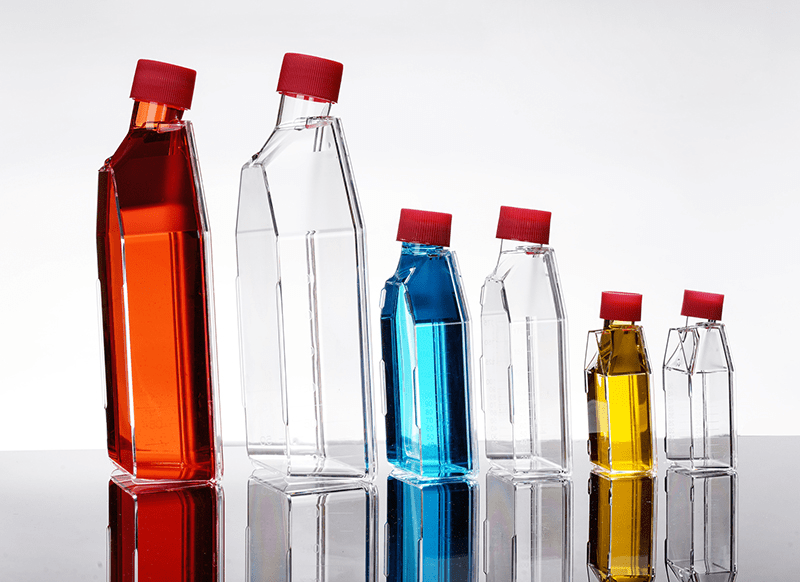
- Shape: Tissue culture flasks can have different shapes, including rectangular, square, or cylindrical. The choice of shape depends on the specific requirements of the experiment and the equipment used for handling the flasks.
- Surface Treatment: The surface of tissue culture flasks can be treated to promote cell attachment and growth. Common surface treatments include:
- Tissue Culture-Treated (TC-Treated): These flasks have a surface that is specially treated to promote cell adhesion and growth. They are ideal for adherent cell cultures.
- Non-Tissue Culture-Treated: These flasks do not have any surface treatment and are generally used for suspension cultures or for experiments where cell attachment is not required.
- Closure Type: Tissue culture flasks typically come with different closure types to prevent contamination and allow gas exchange. Common closure types include:
- Vent Cap: These caps have a vent or filter to allow gas exchange while preventing contamination.
- Screw Cap: These caps screw tightly onto the flask to provide a secure seal.
- Plug Seal Cap: These caps have a plug seal that fits snugly into the neck of the flask to prevent leakage and contamination.
- Material: Tissue culture flasks are usually made of transparent plastic materials such as polystyrene or PET (polyethylene terephthalate), which allows visual inspection of cell cultures without removing them from the flask.
- Specialized Flasks: There are also specialized tissue culture flasks designed for specific applications, such as:
- Low-Adhesion Flasks: These flasks have surfaces treated to minimize cell adhesion, which is useful for certain suspension cell cultures or experiments where cell detachment is desired.
- CellSTACK™ Culture Chambers: These are multi-layer flasks that allow for the expansion of large quantities of cells in a small footprint, making them suitable for large-scale cell culture applications.
Overall, the choice of tissue culture flask depends on the specific requirements of the cell culture experiment, including the type of cells being cultured, the scale of the culture, and the experimental conditions.
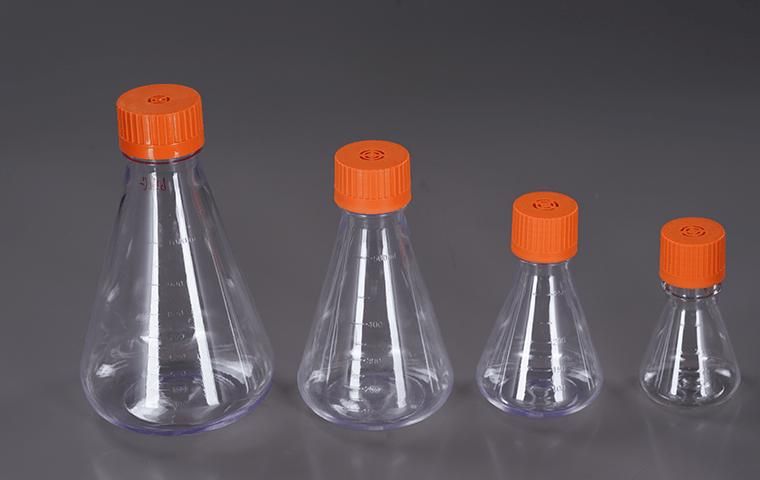
Pros and Cons of Common Types of Tissue Culture Flasks
| Type of Flask | Pros | Cons |
| T-Flasks | Easy to handle and access for cell culture maintenance. Widely available and cost-effective. Suitable for a variety of cell types and applications. | Limited surface area for cell growth, which may require frequent passaging. Not suitable for large-scale production. |
| Roller Bottles | Provide dynamic culture environment, mimicking physiological conditions. Suitable for large-scale cell culture production. Can achieve high cell densities. | Require specialized roller apparatus for agitation. More complex handling compared to static cultures. Not suitable for all cell types. |
| Suspension Culture Flasks | Designed for growing cells in suspension, eliminating the need for surface attachment. Suitable for scalable production of suspension-adapted cell lines. Easy to harvest cells. | Limited surface area for cell growth. May require specialized culture conditions for certain cell types. |
| CellSTACK Culture Chambers | Stackable units provide scalability for large-scale culture applications. Multiple culture surfaces increase productivity. Reduced footprint compared to traditional flasks. | Higher initial cost compared to traditional flasks. Require specific adapters or connectors for stacking. Limited availability of compatible accessories. |
| Multilayer Flasks | Increased surface area for cell growth, maximizing productivity in limited space. Suitable for high-density cell culture and large-scale production. Reduce labor and handling compared to T-flasks. | Higher initial cost compared to traditional flasks. May require specialized adapters or connectors for stacking. Limited availability of compatible accessories. |
| Microcarrier Culture Flasks | Provide a larger surface area for cell attachment, allowing for high cell densities. Suitable for large-scale production of adherent cells. Compatible with microcarrier-based cell culture systems. | Require optimization of microcarrier concentration and culture conditions. More complex handling compared to traditional flasks. Limited availability of compatible accessories. |
This table highlight the specific advantages and limitations of each type of tissue culture flask, aiding researchers in selecting the most suitable flask for their experimental needs.
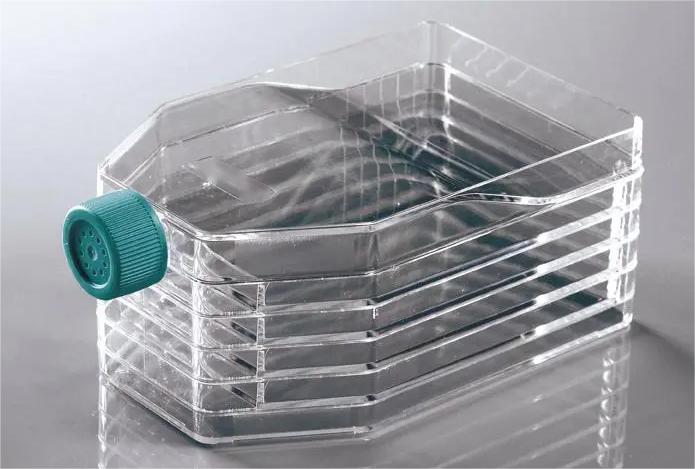
Factors to Consider When Selecting a Tissue Culture Flask
Selecting the right tissue culture flask is crucial for successful cell culture experiments. Here are some factors to consider:
- Material: Tissue culture flasks are typically made from polystyrene or treated plastic to minimize cell adhesion. Ensure the material is non-toxic, sterile, and compatible with your cell type.
- Size and Volume: Choose a flask size that accommodates the volume of media and the number of cells you plan to culture. Flasks come in various sizes such as T25, T75, T175, etc., indicating the surface area available for cell growth.
- Shape and Design: Flasks come in different shapes, including rectangular, triangular, and cylindrical. Choose the shape that suits your experimental setup, such as ease of handling and space efficiency.
- Surface Coating: Some flasks are treated with coatings like collagen, poly-lysine, or other extracellular matrix proteins to enhance cell attachment and growth. Consider the coating based on your cell type’s requirements.
- Closure Type: Flasks may have screw caps, vented caps, or filter caps. Vented or filter caps allow gas exchange while preventing contamination. Choose the closure type based on your specific culture requirements.
- Sterility: Ensure the flasks are sterilized and individually packaged to prevent contamination. Check for sterile packaging and expiration dates before use.
- Quality Control: Select flasks from reputable suppliers with a track record of quality control and consistency. This reduces the risk of variability between batches and ensures reliable results.
- Cost: Consider the cost per flask and balance it with the quality and performance. Cheaper flasks may save money initially but could lead to inconsistent results or contamination issues in the long run.
- Compatibility: Ensure compatibility with your cell culture equipment, such as incubators, shakers, and microscope stages. Standardized flask sizes and designs are often preferred for compatibility reasons.
- Special Features: Some flasks come with additional features like surface treatments for specific cell types, graduated markings for easy volume measurement, or stacking rims for space-saving storage.
By considering these factors, you can select tissue culture flasks that suit your specific experimental needs, leading to successful and reproducible cell culture results.
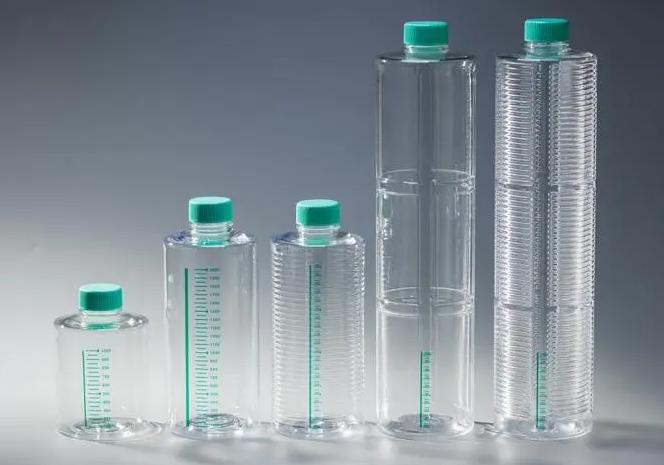
Conclusion
Selecting the right tissue culture flask is an essential step for successful cell culture experiments. By understanding the different types of flasks, their advantages and disadvantages, and considering the specific needs of your cell line, you can create an optimal environment for cell growth and proliferation. Remember, a well-chosen flask is the foundation for healthy and productive cell cultures. If you have no idea of selecting the right tissue culture flasks, please feel free to contact the professional laboratory consumables supplier or manufacturer – Scopelab, believe they will not let you down.
